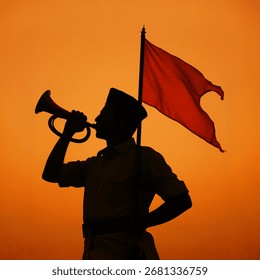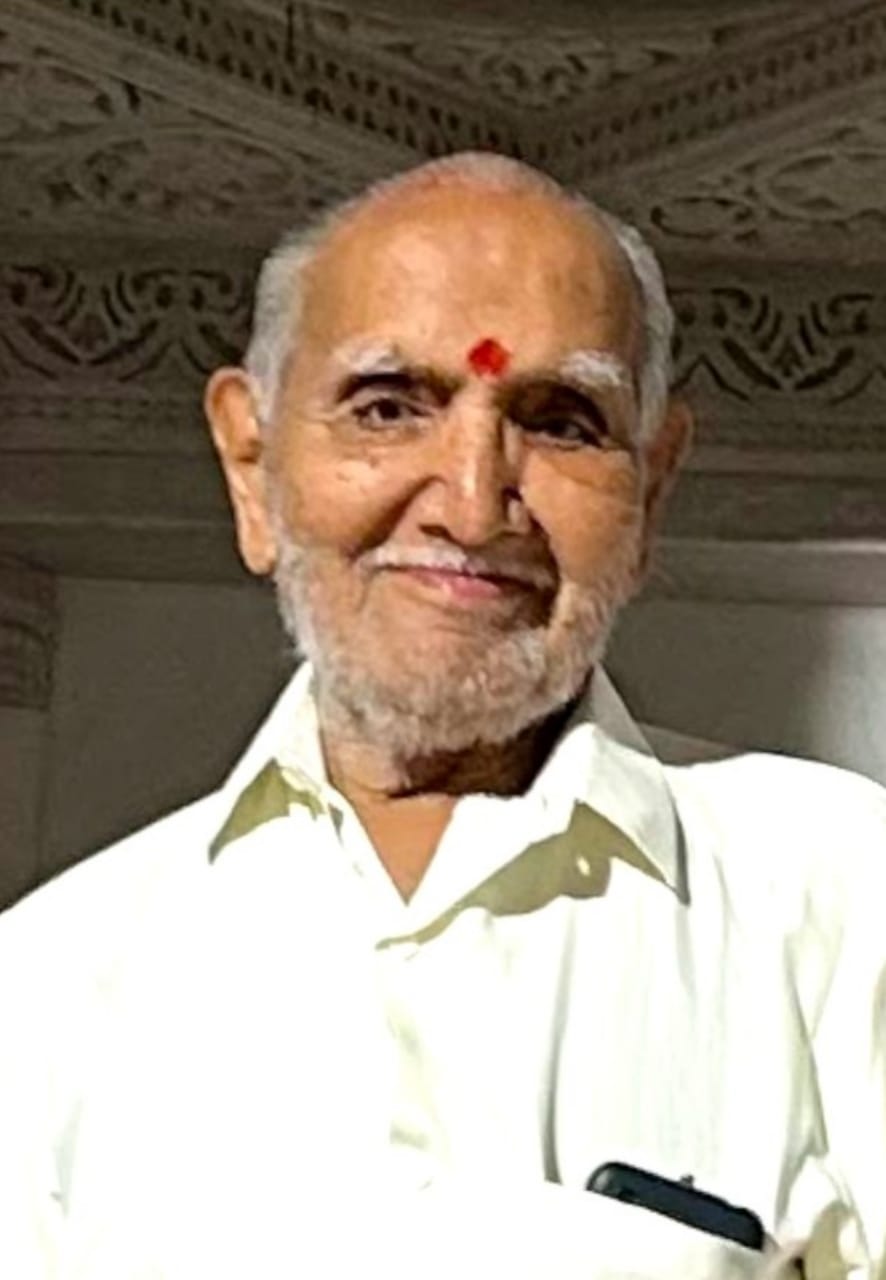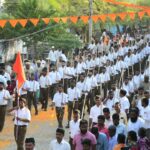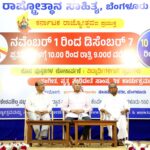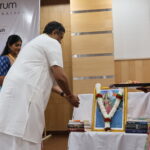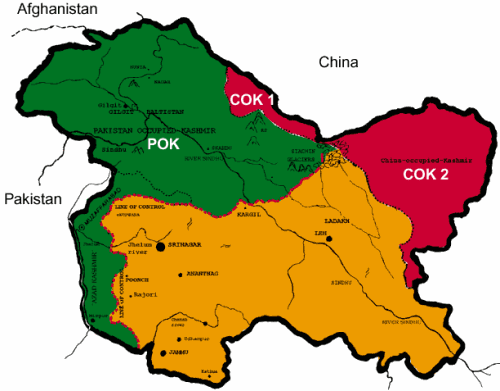
Jammu and Kashmir Map showing Pak occupied Kashmir POK and China occupied Kashmir COK
Serious efforts should be made to spread these facts to the people of this country so that the fog of misconception on this issue that has engulfed us for more than six decades is cleared. It will be relevant to remember these events on 23rd September which is Maharaja Hari Singh’s birthday and on 26th October which is the day of merger.
by Ashurhosh

“I, Shriman Maharadiraj Hari Singh, ruler of Jammu And Kashmir State in the exercise of my sovereignty in and over my said state, do hereby execute this Instrument of Accession”
This is the same instrument of accession that ruler of every princely state had signed on. The ruler of Jammu & Kashmir Maharaja Hari Singh too had signed on the same instrument of accession.
While accepting this instrument of accession, the then Governor General Lord Mountbatten wrote “…. I do hereby accept this Instrument of accession. Dated this twenty seventh day of October, Nineteen Hundred and forty seven.” This is the same words which Mountbatten wrote while accepting all the other Instruments of Accessions of all other princely states too. If both the Instrument of Accession and its acceptance were the same for all the princely states, then where is the question of dispute at all? This also means that the so-called dispute that we experience today is not based on facts and is a misconception that has been wrought intentionally not only by the separatist elements, the state and central governments have a role in it too.
The truth is that the citizens of the state had to suffer immensely due to the aggression of Pakistani forces due to which they saw Pakistan as an aggressor and never even thought of merging with it. Even Sheikh Abdullah, who was very close to Pandit Jawaharlal Nehru and due to whose adamant wish to become the Prime Minister of the State the accession with India was delayed, for his own reasons opposed Jinnah’s two-nation theory and was completely against the merger of the state with Pakistan.
Inspite of this, the main reason for the origin of the misconception over the merger of Jammu & Kashmir with India was the way Nehru adopted a viewpoint regarding the state which was different from the way he viewed other princely states. The uniform policy that was to be adopted by all the princely states that were to be merged was to form a popular government which will have a Chief Minister or a Prime Minister who will be monitored by the Kings Diwan until Independent India becomes a Republic. But this arrangement was different for Jammu & Kashmir from the beginning as Nehru wanted that Maharaja Hari Singh abdicate his powers for Sheikh Abdullah even before the merger. This was not acceptable to the Maharaja. It is necessary to understand this reluctance of the Maharaja in a historical perspective.
We should not forget that Hari Singh was the Maharaja of one of the biggest princely states. He was a patriotic king too. He being the chairman of the Chamber of Princes (Narendra Mandal) had presided over the roundtable conference where he had taken a resolute stand for the independence of India. He had in fact advised the Britain’s representatives that they should not worry much about the kings of the princely states and that after independence the relationship with the princely states should be left to the kings of these states. Naturally, the British did not like this appeal of Maharaja Hari Singh and had resolved to teach him a lesson. In 1947 they got an opportunity for this.
Background
The National Conference and the Muslim Conference were the two active parties in Jammu & Kashmir before independence. The National Conference was formed in 1939. The National Conference had an influence only in the Kashmir valley. The Muslim conference had some approval only in a few isolated pockets of Jammu region. None of the parties were against India and hence no inference could have been drawn that the people of the state had any reservations against the merger of the state with India. But when it became clear that the British would grant Independence and transfer the power to the Congress and a separate nation would be formed by cutting a portion of India in the name of Pakistan whose reigns would be in the hands of Jinnah, Sheikh Abdullah’s wish that the reins of power in Kashmir be transferred to him only strengthened further. In 1946 the National Conference had raised the ‘Quit Kashmir’ slogan. This was not against the British but against Maharaja Hari Singh. It was their demand that the Maharaja hand over the power to the National Conference on the lines that the Congress was handed power by the British and quit Kashmir. As a result, the Maharaja arrested Sheikh Abdullah and imprisoned him for treason. Nehru supported Sheikh Abdullah agitation against the Maharaja and this resulted in the souring of the relationship between them. However, insistence of Pandit Nehru bound the king and was forced to hand over power in the hands of Sheikh Abdullah. But Sheikh was released from jail only after he pledged loyalty to the Maharaja. In a letter dated 26th September, 1947 Sheikh Abdullah wrote:
– Notwithstanding whatever has happened in the past, I wish to make it clear to the Maharaja that I and my party have never had any feelings of disloyalty towards your throne or your dynasty. Maharaja, on behalf of myself and my organization I assure you of the full commitment and support. Maharaja, before I close this letter I beg to assure your Highness once again of my steadfast loyalty and pray to God that an era of peace, prosperity and good governance prevail under the aegis your Highness.
On 1st October, 1947 Sheikh Abdullah in his address to a gathering in Hazoori Bagh in Srinagar had said, “Until the last drop of blood is present in my body, I will oppose the two-nation theory”. This shows that inspite several differences Sheikh Abdullah was not at all willing to go with Pakistan. The Indian Independence Act of 1947 had mandated that only the ruler of a princely state will have the authority to decide on the merger of his state and there was no reference to any plebiscite in the act. Even then, it can be said that the majority in Jammu & Kashmir including the majority of Muslims were never against the merger of the state with India.
Roots of the controversy
It can be said that the root of the controversy lies with the letter of reply Mountbatten had written to Maharaja Hari Singh’s signed Instrument of Accession where he mentioned the need to take people’s mandate on the merger. He had written – “In consistence with their policy that in the case of any State where the issue of accession has been the subject of dispute, the question of accession should be decided in accordance with the wishes of the people of the State, it is my Government’s wish that, as soon as law and order have been restored in Kashmir and its soil cleared of the invader, the question of the State’s accession should be settled by a reference to the people.” The only importance of this letter is that it was written by the Governor General to the Maharaja. The letter has not legislative status as there was no mention of any such conditions for merger in the Indian Independence Act of 1947. It is also a fact that the Maharaja had sent a letter along with his signed Instrument of accession where he had outlined the reasons for the delay in deciding to merge with India. He had not mentioned of any dispute regarding the merger of his state in the letter. His letter neither mentions of any plebiscite nor of merger of his state with J&K or of any agitation against the merger. There is no reference to any dispute in many other records that are available. Despite these facts, Mountbatten mentioning of some ‘dispute’ in his letter to the Maharaja points to politics with far reaching consequences being kept in mind. Mountbatten had written this letter on 27th October, 1947 in reply to Maharaja’s letter. Although this letter written by the Governor General has no legislative status, he has not mentioned that it were his personal opinions which framed his delusory view on referendum. He says it was ‘the wish of his government’. If this was true then the harm it caused to the interest of the nation should also be borne by the then Congress government and personally by the then Prime Minister Nehru. If it is false, why has this falsehood written by the Governor General in the government’s name not been refuted till date? Moreover, if this was the policy of the government, why was it forced upon Jammu & Kashmir state only? Either Mountbatten or the then Government never wrote this sort of a letter to any of the princely states. This question is alive even today and an answer is expected.
In his letter Mountbatten also writes, “My Government and I note with satisfaction that Your Highness has decided to invite Sheikh Abdullah to form an interim Government to work with your Prime Minister.” Though on several occasions people have opined that the root of the whole controversy is Nehru’s personal interest in Kashmir and his personal friendship with Sheikh Abdullah, Mountbatten’s letter does not reveal the reason why he was so interested to get Sheikh Abdullah released from jail and hand over power to him in complicated circumstances. However, there is no proof that Maharaja Hari Singh agreed to the conditions set by Mountbatten or ‘his government’ or that such condition were added to the instrument of accession. Despite this fact, the separatists who take the aid of Mountbatten’s letter deliberately ignore Maharaja Hari Singh’s letter where he clearly writes that the people of this state both Hindus and Muslims generally have not taken part in any kind of disruptive activities. But the government of India till date has not taken any measures expected from it to remove this misconception.
The reason behind this unwanted intervention by Mountbatten no doubt had been his personal relationship with Pandit Nehru but somewhere the politics of Britain was also working in tandem. This gets more credence when we realize the way Britain and America took sides with Pakistan in the United Nations despite Sheikh Abdullah declaring at the United Nations Security Council on 5th February, 1948 that “The issue is of Pakistan’s aggression on Jammu & Kashmir and not merger”. The United Nations did nothing to act on its own resolution that called for clearing the state of Jammu and Kashmir from the Pakistani invaders.
The government of India did not even consult Maharaja Hari Singh when the complaint against Pakistan was being drafted or when the complaint was registered in the United Nations Security Council against Pakistan. Maharaja Hari Singh had expressed his concern in this matter his letter dated 31st January, 1948 addressed to the then interim deputy prime minister Vallabh Bhai Patel. He also expressed his extreme displeasure over the fact that within two months after the accession of Jammu & Kashmir, India lost Mangala Valley, Alibaig, Gurdwara, Mirpur town, Bhimbhar town, Deva and Kotali areas to Pakistan. He had even proposed that he would like to personally command the Indian Army so that the intruders and the Pakistani army can be driven out. But it seems like the government of India had decided to completely neglect the Maharaja after the merger. It is also to be noted here that as per Charter 35 of the United Nations, the government of India on 1st January, 1948 had raised the issue of intrusion by Pakistan in the Security Council and said, “The invaders, consisting of nationals of Pakistan and of tribesmen are drawing help from Pakistan for operations against Jammu and Kashmir, a State which has acceded to the Dominion of India and is part of India. It is due to this that this situation has arisen between India and Pakistan. The Government of India requests the Security Council to call upon Pakistan to put an end immediately to the giving of such assistance, which is an act of aggression against India. If Pakistan does not do so, the Government of India may be compelled, in self-defence, to enter Pakistan territory, in order to take military action against the invaders”. Exactly one year later i.e. on 1st January, 1949 the Indian government declared unilateral cease fire without clearing the areas of Jammu & Kashmir from the illegal occupation of Pakistan. At the time of the cease fire 85,000 Sq. Kms of the area of Jammu & Kashmir was under the illegal possession of Pakistan, which continues to be so even to this day.
Constitutional Status
On 17th June 1947 the British parliament passed the Indian Independence Act. With the approval of the act by the Britain’s royalty on 18th July that year, India secured its independence on 15th August 1947 and a part of its region was cut away and a new nation, Pakistan, was formed. Hence East Bengal, Western Punjab, North-East frontier Agency and Sindh became Pakistan’s territory. The rest of the regions of the erstwhile British Empire of the Subcontinent became a part of India. With the passage of the Independence Act the princely states were freed from the supremacy of British rule, but they did not get the status of a Nation and it was suggested to them that their interest lies with their merger into Bharat or Pakistan. With the implementation of this Act, the British responsibility of ensuring security of these states ended automatically. As per the Government of India Act, 1935, which was included in the Indian Independence Act, 1947, the right of taking a decision regarding merger was given to the ruler of the state only. It was also decided that any Indian State would be treated as merged into either of the two nations only when the Governor General accorded the approval to the Instrument of Accession prepared by the administration of the respective state. There were no provisions for conditional merger in the Indian Independence Act of 1947.
On October 26, 1947 Maharaja Hari Singh merged Jammu & Kashmir into India on the basis of the same legal Instrument of Accession under which the remaining states were merged into India and the then Governor General of India Mountbatten had signed the same… “I hereby accept this Instrument of Accession, dated October 27, 1947.” The clauses of the Instrument of Accession signed by Maharaja Hari Singh, which show that the merger of Jammu & Kashmir into India is full and final, are as follows:
– Clause 1: “I hereby declare that I accede to the Dominion of India with the intent that the Governor General of India, the Dominion Legislature, the Federal Court and any other Dominion authority established for the purposes of the Dominion shall by virtue of this Instrument of Accession, but always subject to the terms thereof and for the purposes only of the Dominion.”
– Clause 9: “I hereby declare that I execute this Instrument on behalf of this State and that any reference in this Instrument to me or to the Ruler of the State is to be construed as including a reference to my heirs and successors.”
In accordance to the Clause 1 of the Instrument of Accession, Jammu & Kashmir is a permanent part of India. Moreover as per the Clause 1 of the Indian Constitution Jammu & Kashmir is an integral part of India and it features as a State in the list of States of Indian Union at number 15. Maharaja Hari Singh further states in his letter that, “The terms of this my Instrument of Accession shall not be varied by any amendment of the Indian Independence Act of 1947, unless such amendment is accepted by me by a supplementary instrument to this instrument.” It is to be noted that under the Indian Independence Act of 1947, once the Instrument of accession was signed by the ruler no one including Pandit Nehru, Lord Mountbatten, Mohammad Ali Jinnah, Queen of England, British Parliament or the residents of the states concerned had any right to raise any objection with regard to the merger of the state by the ruler.
In 1951, the Jammu & Kashmir State Constituent Assembly was constituted. However the nominations of all the candidates from the opposition parties were annulled. There were 75 elected members were from National Conference, among who 73 were elected unopposed due to the absence of any candidate. Maulana Masoodi became its Speaker. This very Constituent Assembly ratified the merger of the State with India on February 6, 1954. On May 14, 1954, the President of India issued Constitutional Order (Applicable on Jammu & Kashmir) under Article 370 of the Indian Constitution through which the Indian Constitution was applied on Jammu & Kashmir with certain exceptions and amendments.
Jammu and Kashmir’s own constitution which came into force from January 26, 1957, states:
– Article 3: Jammu & Kashmir state is and shall remain an integral part of India.
– Article 4: Jammu & Kashmir state means the area which was under the sovereign control of the rulers of the state till 15th August 1947.
It has been very clearly stated in Article 147 of the same constitution that Article 3 and Article 4 are irrevocable.
It had been reiterated in Indira-Sheikh Agreement of 1974 that:
– The State of Jammu & Kashmir, which is a constituent unit of the Union of India, shall, in its relation with the Union, continue to be governed by the temporary Article 370 of Constitution of India.
In the resolution adopted in Parliament on November 14, 1962 after China’s aggression and in the resolution adopted unanimously in Parliament on February 22, 1994, it has been clearly stated that the areas that were illegally usurped by China in 1962 and by Pakistan in 1947 will certainly be taken back and that the government cannot compromise on this.
Despite the many facts stated above, those who are creating an atmosphere of misconception or are endorsing the demands of the separatists are directly or indirectly participating in anti-national activities. It is high time that the state and central governments deal sternly with such elements.
Serious efforts should be made to spread these facts to the people of this country so that the fog of misconception on this issue that has engulfed us for more than six decades is cleared. It will be relevant to remember these events on 23rd September which is Maharaja Hari Singh’s birthday and on 26th October which is the day of merger.
*****************************************************


